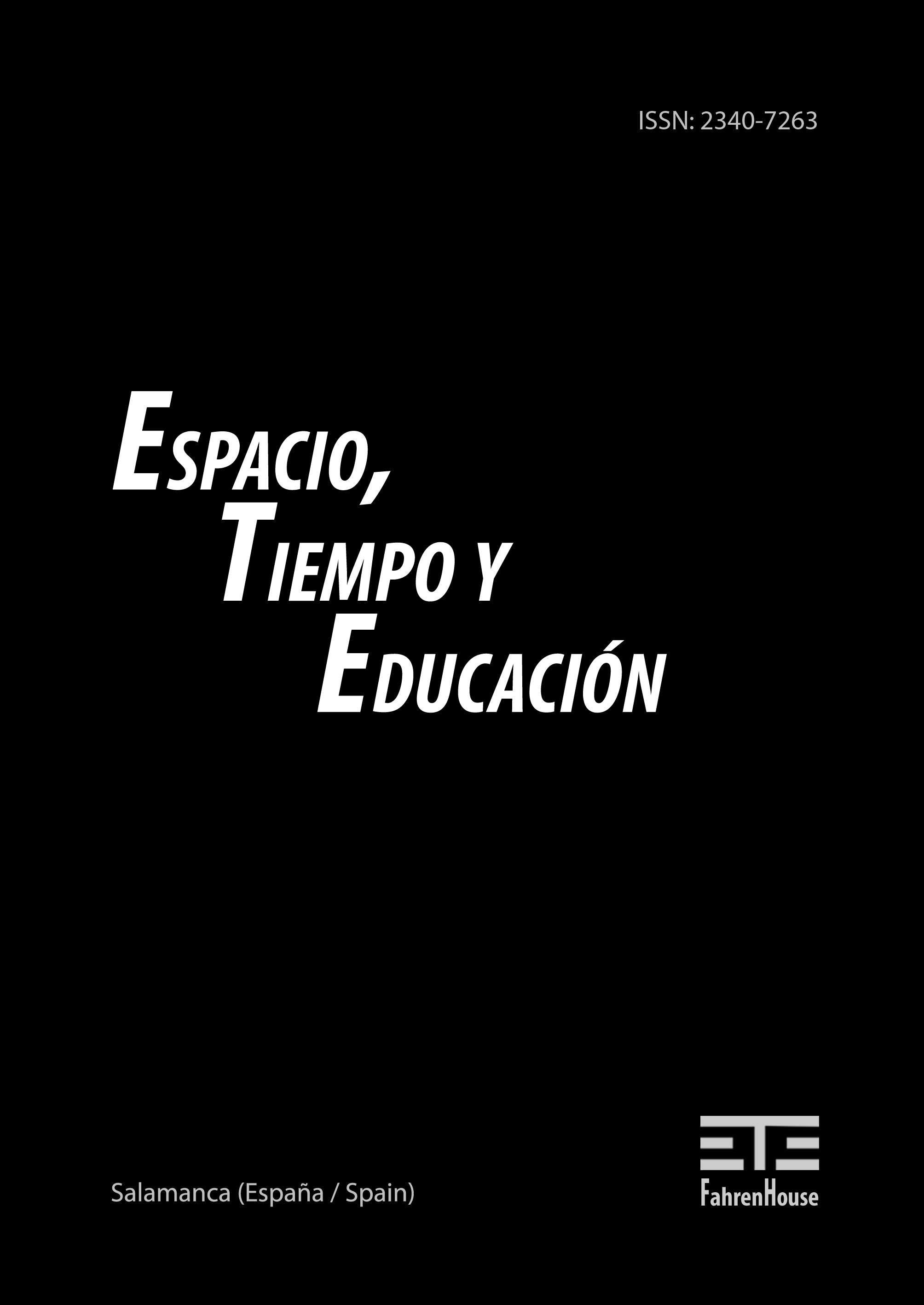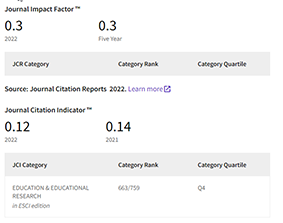Space and Time in the Creative Curriculum: Drama and education in two island nations in the early twentieth century
DOI:
https://doi.org/10.14516/ete.224Keywords:
progressivism, drama, pedagogy, creativity, national cultures, transnational exchangeAbstract
This article aims to reflect on space, time and education in two distinct but related ways: space and time as components of pedagogy, focusing on drama in the curriculum, where space and time frame language and gesture in a complex mode of communication; and as dimensions of historiographical analysis of the evolution of educational policies and practices. Considering progressive innovations of teaching through drama in Britain and Japan, we explore relationships across space and time, drawing on documentary and mainly published evidence. For primary sources we draw on the writing of individuals such as Shoyo Tsubouchi and Kuniyoshi Obara in Japan, Harriet Finlay-Johnson and Henry Caldwell Cook in Britain. We identify a number of progressive schools, their enterprise and experiments, and consider the role of national and international forums. Sources include professional journals in English and Japanese languages, the New Education Fellowship, its conferences and its journal New Era as vehicles for exchange. Taking a critical approach to historiography, the article refers to more recent pedagogical discourse and historical scholarship by Takeo Fujikura, Manami Yoda, Gavin Bolton, Mary Bowmaker and Helen Nicholson. It concludes by considering lessons for education history, and legacies for drama in education, reflecting on current challenges for school drama in light of its past.
References
Armytage, W.H.G. (1964). Four Hundred Years of English Education. Cambridge: Cambridge University Press.
Beacock, D.A. (1943). Play way English for to-day: the methods and influence of H. Caldwell Cook. London: Nelson.
Bolton, G. (1998). Acting in Classroom Drama: A Critical Analysis. Birmingham: University of Central England and Trentham Books.
Bolton, G. (2007). A History of Drama Education: A Search for Substance. In Bresler, L. (Ed.), International Handbook of Research in Arts Education (pp. 45-66). Dordrecht: Springer.
Bowmaker, M. (2002). A Little School on the Downs. Bognor Regis: Woodfield Publishing.
Coggin, P. (1956). Drama and Education: An historical survey from Ancient Greece to the present day. London: Thames and Hudson.
Cohen, S. (1999). Challenging Orthodoxies: Towards a New Cultural History of Education. New York: Peter Lang.
Cook, H. Caldwell (1917). The play way: an essay in educational method. London: Heinemann.
Cunningham, P. (2004a). Johnson, Harriet (1871-1956). Oxford Dictionary of National Biography. Oxford: Oxford University Press. Accessed 23 Sept 2013, from: http://www.oxforddnb.com/view/article/70675. doi:10.1093/ref:odnb/70675.
Cunningham, P. (2004 b). Cook, Henry Caldwell (1886–1939). Oxford Dictionary of National Biography. Oxford: Oxford University Press. Accessed 23 Sept 2013, from: http://www.oxforddnb.com/view/article/63805. doi:10.1093/ref:odnb/63805.
Finlay-Johnson, H. (1911). The dramatic method of teaching. London: J. Nisbet.
Fujikura, T. (2004). Child drama for domestic presentation: The first-known Japanese concept of child drama. Youth Theatre Journal, 18.
Fujikura, T. (2006). Reevaluation of the effects of Shoyo Tsubouchi’s theory of child drama: Child drama for domestic presentation. (PhD diss.). University of Wisconsin-Madison.
Fujikura, T. (2010). Between Theory and Practice: Contradictions and Substantial Effects of Shoyo Tsubouchi’s Child Drama. Youth Theatre Journal, 24(1), 77-95.
Fujikura, T. (n.d.). http://www.kanjiyama.com/english/. Accessed 23 Sept 2013.
Gallimore, D. (2016). Tsubouchi Shōyō and the Beauty of Shakespeare Translation in 1900s Japan. Multicultural Shakespeare: Translation, Appropriation and Performance, 13(28), 69-85.
Goodson, I. (1987). School subjects and curriculum change, 2nd ed. London: Falmer.
Haga, M. (2017). Free Drawing and art education: Kanae Yamamoto and Bunka Gakuin. In Yamasaki, Y., & Kuno, H. (Eds), Educational Progressivism, Cultural Encounters and Reform in Japan (pp. 57-73). London: Routledge.
Herts, A.M. (1911). To Make Good Citizens - The Theatre for Children. New York Times (12 November).
Holmes, E. (1911). What Is and What Might Be: A study of education in general and elementary education in particular. London: Constable. Accessed 21 Nov. 17, from: http://www.gutenberg.org/ebooks/20555.
Johnston, R., Gregory, D., Pratt, G., & Watts, M. (Eds.). (2009). The Dictionary of Human Geography. 5th ed. Oxford: Blackwells.
Kliebard, H. M. (1995). The struggle for the American curriculum, 1893-1958 (2nd Ed.). New York; London: Routledge.
Kuroyanagi, T. (1981). Madogiwa no Totto-chan. Tokyo: Kodansha International (translated as Totto-chan: the Little Girl at the Window. Tokyo: Kodansha International, 1984).
Kyoiku Yogo Domei (Education Defence Association). (1924). Okada Bunso no seisaku ni taisuru ikensho (Opinions on educational policy by Minister of Education Okada), Teikokukyoikukai (Japanese Imperial Educational Association). Teikokukyoiku (Imperial Education), no. 507 (November).
Kyotanabe Steiner school in Kyoto. Accessed 26 Nov. 2017, from: https://ktsg.jp/
Law, Jonathan (Ed.) (2011). The Methuen Drama Dictionary of the Theatre. London: Bloomsbury. (Page numbers cited from online edition).
Leiter, Samuel (2014). Historical Dictionary of Japanese Traditional Theatre. 2nd ed London: Rowman and Littlefield.
Miyamoto, K. (2010). The evolution of school buildings in America. Kwansei Gakuin University Humanities Review, (15), 29-49.
New Era: An International Review of New Education (1923), 4(13).
Nicholson, H. (2011). Theatre, Education and Performance: The Map and the Story. Basingstoke: Palgrave Macmillan.
Obara, K. (1923). Gakkogeki Ron (The Theory of School Drama). Tokyo: Idea shoin, 1-5.
Reese, William (2001). The Origins of Progressive Education. History of Education Quarterly, 41(1), 1-24.
Sakuma, H. (2017). Kuniyoshi Obara’s Zenjin education. In Yamasaki, Y., & Kuno H. (Eds), Educational Progressivism (pp. 93-108). London: Routledge.
Salz, J. (2016). A History of Japanese Theatre. Cambridge: Cambridge University Press.
Sasaki, M. (2012). Gakkogeki ni tsuite no kosatsu (A Study on School Drama), Kansei Gakuin University, Kyoikugakuronkyu, 4.
School Drama in Seijo primary school. Accessed 26 Nov. 2017, from: http://www.seijogakuen.ed.jp/shoto/school-life/journal/krvrc800000030rf.html
Selleck, R.J.W. (1968). The New Education 1870-1914. London: Pitman.
Selleck, R.J.W. (1972). English Primary Education and the Progressives 1914-1939. London: Routledge and Kegan Paul.
Stewart, W.A.C. (1972). Progressives and Radicals in English Education 1750-1970. London: Macmillan.
Stewart, W.A.C., & McCann, W.P. (1967). The Educational Innovators vol.1 1750-1880. London: Macmillan.
Stewart, W.A.C., & McCann, W.P. (1968). The Educational Innovators vol.2 1881-1967. London: Macmillan.
Tomita, H. (1998). Nihon Engekikyoikushi (History of Drama Education in Japan). Tokyo: Kokudosha.
Tribe, K. (2004). Translator’s Introduction in Koselleck, R. Futures Past: On the Semantics of Historical Time. New York: Columbia University Press.
Tsubouchi, S. (1923). Jidokyoiku to Engeki (Child Education and Drama). Tokyo: Waseda Daigaku Shuppanbu (reprinted Tokyo: Koguma Sha, 1973).
Tsujimoto, M. (2017). Formation and growth of an education-based society 1600 to 1868. In Tsujimoto, M., & Yamasaki, Y. (Eds.), The History of Education in Japan (1600-2000) (pp. 5-33). London: Routledge.
Tsujimoto, M., & Yamasaki, Y. (Eds.). The History of Education in Japan (1600-2000) (pp. 5-33). London: Routledge.
Vail Motter, T.H. (1929). The School Drama in England. London: Longmans Green & Co.
Yamasaki,Y. (2008). Creating New Networks on New Ideals in Education in England and Japan, 1910-1940. Mukogawa Women’s University, Kyoikugaku Kenkyuronshu, 3, 19-38.
Yamasaki, Y. (2017a). New education and Taisho democracy 1900 to 1930s, in Tsujimoto, M., & Yamasaki, Y. (Eds.), The History of Education in Japan (1600-2000) (pp. 61-85). London: Routledge.
Yamasaki, Y. (2017b). Origins and Outline of Progressive Education in Japan. Yamasaki, Y., & Kuno H. (Eds.), Educational Progressivism, Cultural Encounters and Reform in Japan (pp. 11-28). London: Routledge.
Yamasaki, Y. (2017c). Kinokuni Children’s Village School: theory and practice from Dewey to Neill and Aitkenhead. In Yamasaki, Y., & Kuno H. (Eds.), Educational Progressivism, Cultural Encounters and Reform in Japan (pp. 155-168). London: Routledge.
Yamasaki, Y., & Kuno H. (Eds.). (2017). Educational Progressivism, Cultural Encounters and Reform in Japan. London: Routledge.
Yoda, M. (2010). Henry Caldwell Cook’s «Play Way» in Language Education. Kyoto University Human and Environmental Studies Departmental Papers, 19, 79- 92.
Yoda, M. (2012). Henry Caldwell Cook and Drama Education in England. (PhD diss.). Kyoto University, ProQuest Dissertations Publishing, 3579948. Accessed 14 Nov. 2017.







